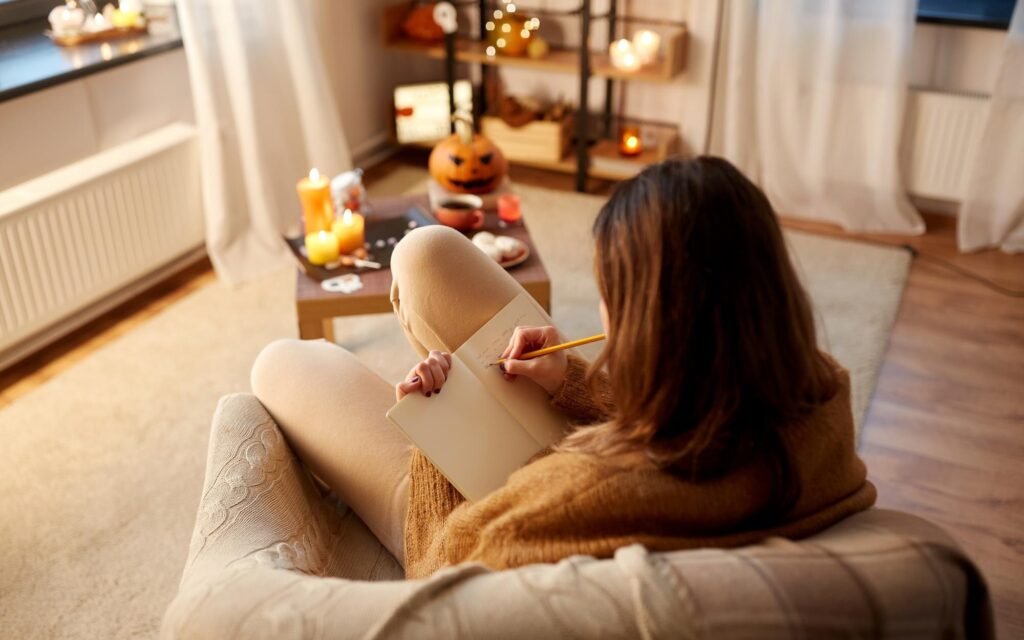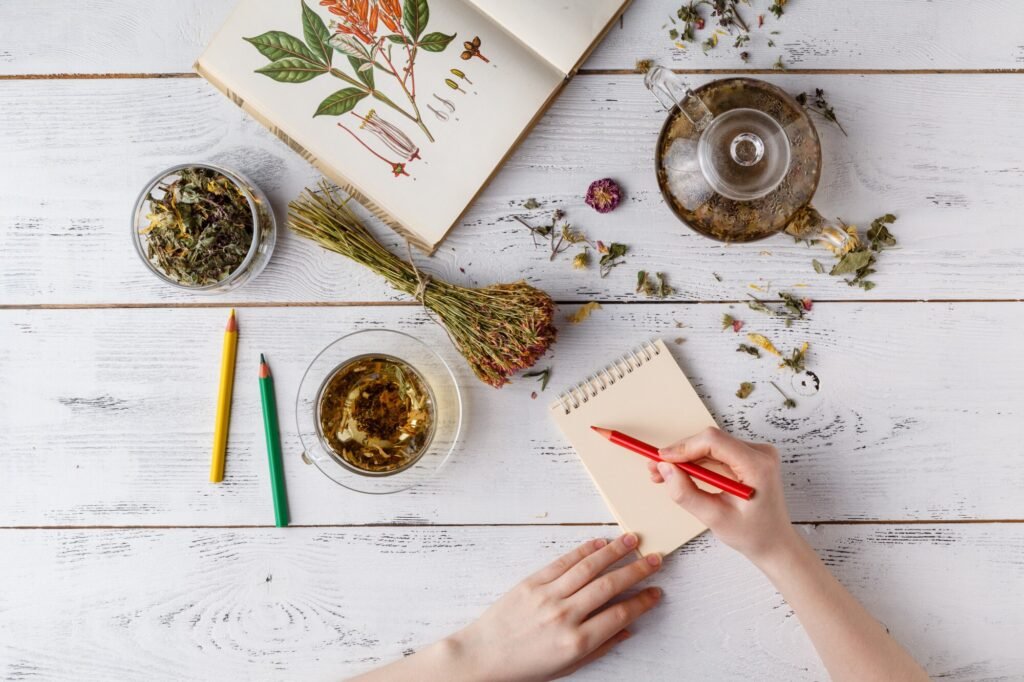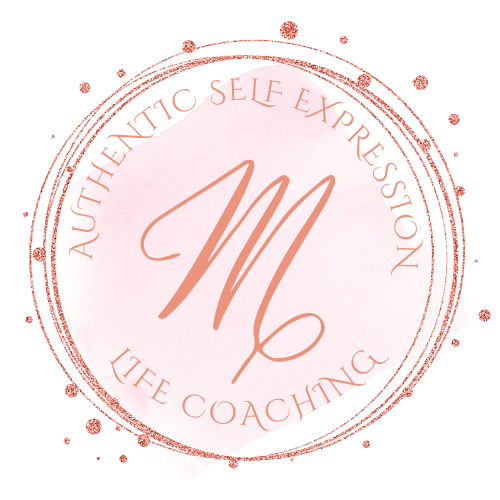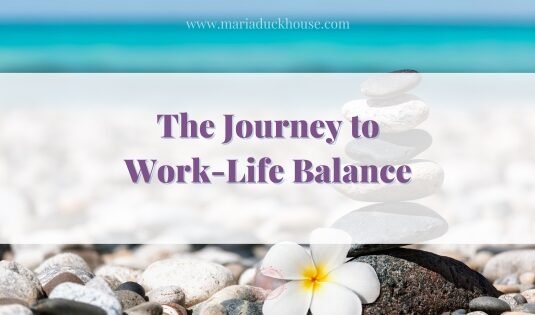When Your Feelings Have No Words
You feel everything so deeply.
The weight of other people’s emotions. The ache of unspoken truths. The tangle of thoughts that keep you awake at night, circling like vultures with no place to land.
You’ve tried talking about it. You’ve tried ignoring it. You’ve tried pushing through it with productivity and busyness and endless cups of tea.
But the feelings remain. Heavy. Wordless. Demanding to be felt.
What if I told you there was a way to make sense of the emotional storm inside you? A way to transform confusion into clarity, overwhelm into understanding, chaos into calm?
Creative journaling isn’t just writing.
It’s emotional archaeology. It’s giving voice to the voiceless parts of you. It’s creating a safe harbour for all the feelings you’ve been carrying alone.
This is your gentle guide to unlocking emotional clarity through the simple, profound act of putting pen to paper with compassion, curiosity, and complete acceptance of whatever wants to emerge.

What Creative Journaling Really Is (And What It Isn’t)
Creative journaling isn’t morning pages, though those can be lovely.
It’s not gratitude lists, though gratitude has its place.
It’s not about becoming a better writer or creating something publishable or finding the perfect words.
Creative journaling is emotional expression without agenda.
It’s giving your inner world permission to exist on paper exactly as it is – messy, contradictory, beautiful, raw.
It’s what happens when you stop trying to make sense of your feelings and start letting them make sense of themselves.
Finding Your Authentic Voice on the Page
Your authentic voice isn’t the one that sounds good.
It’s the one that sounds true.
For years, you’ve learnt to translate your feelings into acceptable language. To soften the sharp edges. To make your pain palatable and your joy smaller so it doesn’t threaten anyone.
But your journal doesn’t need you to be palatable.
It needs you to be real.
Try this: Write a letter to yourself as if you were writing to your dearest friend. What would you say if you trusted that you wouldn’t be judged? What truth wants to be spoken?
Your authentic voice is already there, waiting underneath all the careful editing you’ve learnt to do. Creative journaling is simply the practice of letting it breathe.
If you’ve spent years people-pleasing and struggling to find your voice, creative journaling can help you reclaim your authenticity in a gentle, private way.
Releasing the Need for Perfect Pages
Perfectionism is creativity’s worst enemy.
It’s the voice that says “this isn’t good enough” before you’ve even begun. It’s the reason your journal sits empty whilst your mind overflows.
But here’s what I know about perfect pages: they don’t exist.
The most healing journals are the messiest ones. The ones with crossed-out words and tear stains and margins filled with afterthoughts. The ones that look like they were written by a human having a human experience.
Your permission slip: Nothing you write in your journal needs to be good. It only needs to be yours.
Scribble. Scratch out. Start sentences you don’t finish. Draw squiggles when words fail. Let your journal be as imperfect as you are.
Because you’re not trying to create art. You’re trying to create understanding.
Writing Without the Inner Critic’s Voice
You know that voice, don’t you?
The one that whispers “this is stupid” as you write. The one that makes you second-guess every word, every feeling, every truth that wants to emerge.
That voice learnt to protect you once. But now it’s keeping you small.
Here’s how to quiet it:
Set a timer for five minutes and write without stopping. Don’t lift your pen. Don’t pause to think. Don’t reread what you’ve written.
Just write.
Stream of consciousness. No punctuation required. No complete sentences necessary. Just the unfiltered contents of your mind flowing onto paper.
This isn’t about creating something meaningful. It’s about creating space for meaning to emerge.

Tools for Emotional Archaeology
Creative journaling gives you tools to excavate the emotional layers you’ve buried over time. These techniques help you dig gently, with curiosity rather than force.
Exploring Your Inner Emotional Landscape
Your emotions aren’t random weather patterns that happen to you.
They’re messengers. They carry information about what you need, what you value, what you’ve experienced.
But first, you have to learn to listen.
Emotion mapping: When a strong feeling arises, don’t just name it. Explore it.
Where do you feel it in your body?
What colour would it be?
If it had a voice, what would it say?
What does it remind you of?
What might it be trying to tell you?
Sarah’s story: Sarah came to me feeling “anxious all the time” but couldn’t understand why. Through creative journaling, she discovered her anxiety had a very specific message: she was living someone else’s life.
Her anxiety wasn’t random. It was her soul’s way of saying “this isn’t right for you.”
Six months later, she’d changed careers and felt more at peace than she had in years. Not because the anxiety disappeared, but because she’d learnt to listen to what it was telling her.
The Art of Emotional Self-Expression
Sometimes words aren’t enough.
Sometimes your feelings need colour, shape, movement. Sometimes they need to be drawn, painted, collaged into existence.
This is where creative journaling becomes art therapy.
Beyond words:
Draw your mood as abstract shapes
Create a colour palette for your day
Collage images that represent your dreams
Write poetry that doesn’t have to rhyme
Make lists of metaphors for how you feel
Emma’s breakthrough: Emma struggled to express her grief after losing her mum. Words felt inadequate, almost insulting to the magnitude of her loss.
So she began drawing in her journal instead. Abstract swirls that somehow captured what language couldn’t. Over time, these drawings became a visual diary of her healing journey.
“I didn’t know I could draw grief,” she told me. “But somehow, I could.”
Navigating the Emotional Maze
Life doesn’t come with an emotional roadmap.
You’re meant to feel lost sometimes. Confused. Overwhelmed by the complexity of being human.
But creative journaling can be your compass.
Pattern recognition: After journaling for a few weeks, read back through your entries. What themes emerge? What triggers keep appearing? What do you return to again and again?
These patterns are breadcrumbs leading you back to yourself.
The daily emotional weather report: Each day, briefly note your emotional climate.
Sunny with clouds of worry?
Stormy with periods of calm?
Foggy with unexpected breaks of clarity?
This isn’t about judging your feelings. It’s about witnessing them. And in that witnessing, understanding begins to emerge.

Personal Growth Through Paper and Pen
Creative journaling isn’t just emotional release. It’s emotional evolution. It’s how you grow yourself back to wholeness, one honest word at a time.
Reconnecting With Your Inner Voice
You have an inner voice that knows things.
Knows what you need. Knows what’s true. Knows what’s right for you, even when everyone else disagrees.
But it’s been drowned out by all the other voices. The shoulds and musts and what-will-people-thinks.
Daily check-ins: Start each journaling session by asking yourself:
How am I really feeling today?
What do I need right now?
What wants my attention?
What truth am I avoiding?
Don’t overthink the answers. Trust whatever comes up first.
Lucy’s discovery: Lucy had been feeling restless for months but couldn’t put her finger on why. Through daily check-ins, she realised she was grieving her old identity as a people-pleaser.
“I thought I should be happy about setting boundaries,” she wrote. “But part of me misses being needed all the time, even though it was killing me.”
That honesty was the beginning of real healing.
Gentle Guidance for Difficult Emotions
Not all emotions are easy to feel, let alone write about.
Anger that feels too big. Sadness that feels too deep. Fear that feels too overwhelming.
But these difficult emotions often carry the most important messages.
Approaching difficult feelings:
Start small. Write just one sentence about how you’re feeling.
Give yourself permission to feel whatever you’re feeling without trying to fix it.
Remember that feeling an emotion fully is often the fastest way through it.
Use your journal as a safe container for feelings that feel too big for your body.
The anger that saved Anna: Anna had spent her whole life being “nice.” She prided herself on never getting angry, never raising her voice, never making anyone uncomfortable.
But in her journal, rage poured out. Pages and pages of fury about all the times she’d been dismissed, overlooked, taken for granted.
At first, she was ashamed of these entries. “This isn’t who I am,” she told me.
But that anger was exactly who she was. It was the part of her that knew she deserved better. And once she stopped fearing it, it became the fuel for the changes she needed to make.
Overcoming Fear and Self-Doubt Through Writing
Fear and self-doubt aren’t character flaws.
They’re protection mechanisms that once served you but now hold you back.
Creative journaling helps you dialogue with these parts of yourself instead of being ruled by them.
Fear inquiry: When fear arises, don’t try to push it away. Get curious about it.
Dear Fear,
What are you trying to protect me from?
When did you first learn to worry about this?
What would you need to feel safe?
How can we work together instead of against each other?
Self-doubt dialogue: Write a conversation between your doubting voice and your wise voice.
Doubt: “You’re not good enough for this.”
Wisdom: “Says who? And even if that were true, so what?”
Doubt: “People will judge you.”
Wisdom: “Some will. Others will see themselves in your courage.”
This isn’t about eliminating fear and doubt. It’s about changing your relationship with them.

Your Creative Journaling Practice
You don’t need fancy journals or expensive pens.
You don’t need hours of free time or perfect conditions.
You just need willingness to meet yourself on the page, exactly as you are.
Start here:
Choose a journal that feels good in your hands. It doesn’t have to be special, just yours.
Set aside 10-15 minutes a day. Same time, same place if possible.
Begin each session with three deep breaths. Let your body know this is sacred time.
Start writing. About your day, your feelings, your dreams, your fears. Whatever wants to come.
Don’t edit. Don’t censor. Don’t perform. Just write.
Remember:
Your journal is for you, not for anyone else.
There are no rules except the ones you make.
Messy is better than missing.
Progress isn’t linear, and neither is healing.
The Transformation That Awaits
Creative journaling won’t solve all your problems.
But it will change how you relate to them.
It will teach you that your emotions are not emergencies to be fixed but experiences to be felt.
It will show you that your sensitivity is not a weakness but a superpower.
It will remind you that your voice matters, your feelings are valid, and your inner world is worth exploring.
Most importantly, it will bring you home to yourself.
To the part of you that existed before you learnt to hide. The part that still exists, waiting patiently for you to remember that you are worthy of your own attention, your own compassion, your own love.
Your journal is waiting.
Your feelings are waiting.
You are waiting.
The conversation between you and yourself that will change everything is just a pen stroke away.
Ready to Go Deeper?
If you are ready to stop overthinking and start creating from self trust, this is exactly what we explore together inside my 1:1 coaching sessions. Let us bring your vision to life in a way that feels aligned, grounded, and completely yours. Book a Session here.
With much love, Maria.

https://mariaduckhouse.com | Let’s connect on Instagram
Buy me a coffee



